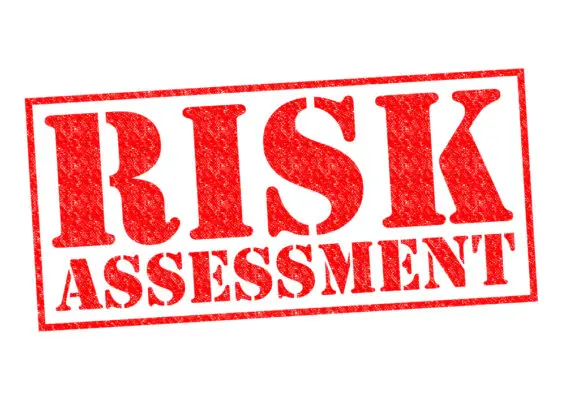A risk assessment is a systematic process utilized by organizations to identify and evaluate potential risks, aiming to prevent adverse consequences and ensure personnel safety.
This article discusses the steps in risk assessment: identifying hazards, evaluating risks, and implementing controls. This process allows businesses to manage potential risks and enhance preparedness effectively.
The first risk assessment step is identifying hazards that threaten the organization. Hazards can range from natural disasters to workplace accidents, intentional acts, chemical hazards, and supply chain disruptions.
Once hazards are identified, the next step involves evaluating risks associated with these hazards. This evaluation considers the likelihood of occurrence and the severity of consequences.
The final step is implementing controls to mitigate or eliminate identified risks. Controls can include safety measures, protocols, and procedures.
Conducting a risk assessment allows organizations to prioritize risks, allocate resources effectively, and implement appropriate risk management strategies.
It is crucial to document the risk assessment process and regularly review and update it to adapt to changes in the workplace.
Organizations can ensure the safety of their personnel and protect against potential hazards by using an analytical and logical approach to risk assessment.

What is it?
A risk assessment is a systematic and structured process that involves identifying and evaluating potential hazards and associated risks in the workplace, with the goal of reducing operational risks, improving safety performance, and achieving objectives.
The core elements of a risk assessment include:
- Risk identification.
- Risk analysis.
- Risk evaluation.
- Risk communication.
Risk identification involves examining various factors such as:
- Tangible and intangible sources of risk.
- Threats and opportunities.
- Causes and events.
- Consequences and their Impact on Objectives.
- Limitations of knowledge and reliability of information.
- Vulnerabilities and capabilities.
- Changes in external and internal context.
- Indicators of emerging risks.
- Time-related factors.
- Biases, assumptions, and beliefs of those involved.
Hazard identification studies, risk assessment matrices, and heat maps are commonly used in risk identification.
Risk analysis considers uncertainties, hazards, consequences, likelihood, events, scenarios, controls, and effectiveness.
- Preliminary hazard analysis and layer of protection analysis are utilized to analyze current conditions with existing controls and potential future states with proposed additional controls.
Risk evaluation involves comparing risk analysis results to established risk criteria to determine the need for additional controls.
- Bow-tie risk analysis provides a holistic view of risk by examining causes, preventive controls, mitigative controls, and consequences of a hazardous event.
Risk-based decision-making considers the wider context and consequences to be internal and external stakeholders.
Risk communication is crucial throughout the risk assessment for comprehensive understanding and effective risk management.
Purpose and Benefits
A risk assessment aims to systematically analyze potential hazards and evaluate associated risks to enhance safety performance and achieve organizational objectives.
This process involves identifying tangible and intangible sources of risk and threats and opportunities that may arise. Causes and events that could lead to these risks are examined, along with the consequences and their impact on objectives.
The assessment also considers the limitations of knowledge and reliability of information, vulnerabilities and capabilities, changes in external and internal context, and indicators of emerging risks.
Organizations can comprehensively understand potential hazards and make informed decisions to protect employees and stakeholders by conducting a risk assessment.
Steps to Follow
Organizations should adhere to a systematic process encompassing several key steps to evaluate potential hazards and mitigate associated risks.
The first step in conducting a risk assessment is risk identification, which involves identifying and documenting all relevant hazards and their potential consequences. Hazard identification techniques such as qualitative analysis and structured studies like HAZID help in this process.
Following risk identification, organizations move on to risk analysis, where uncertainties, events, controls, and their effectiveness are considered. Techniques such as preliminary hazard analysis and a layer of protection analysis are used to analyze current conditions and determine the need for additional controls.
Once risk analysis is complete, the next step is risk evaluation, where the analysis results are compared to established risk criteria to determine the need for additional controls.
Overall, these steps provide a comprehensive framework for conducting a risk assessment and ensuring the safety of workers and the organization.
Identifying Hazards
One crucial step in evaluating potential hazards and mitigating associated risks involves identifying and documenting all relevant hazards and their potential consequences.
This step is essential for a comprehensive understanding of the risks involved and for determining appropriate control measures.
During the process of hazard identification, both tangible and intangible sources of risk should be considered. This can include workplace conditions, equipment, chemicals, and human factors.
Hazard identification techniques such as hazard identification (HAZID) studies, risk assessment matrices, and heat maps can systematically identify and prioritize hazards based on their likelihood and severity.
Additionally, preliminary hazard analysis and layer of protection analysis can be employed to analyze the identified hazards further and assess their potential consequences.
Finally, the hazard identification process results are used in the subsequent steps of risk analysis and evaluation to determine the need for additional controls and to make informed decisions about risk management.

Evaluating Risks
Evaluating risks involves systematically analysing identified hazards and their potential consequences to determine the severity and likelihood of each risk.
Factors examined during this process include tangible and intangible sources of risk, biases, assumptions, beliefs, time-related factors, and knowledge and information reliability limitations.
Hazard identification studies like HAZID use qualitative techniques like guide words and checklists to identify potential hazards, causes, and consequences.
Risk assessment matrices and heat maps compare and prioritize hazards based on their likelihood and severity.
Risk analysis considers uncertainties, events, scenarios, controls, and their effectiveness.
Techniques like preliminary hazard analysis and layer of protection analysis (LOPA) are used to analyze current conditions, existing controls, and proposed additional controls.
Risk evaluation compares risk analysis results to established risk criteria to determine the need for additional controls.
Bow-tie risk analysis provides a holistic view of risk by examining causes, preventive controls, mitigative controls, and consequences of a hazardous event.
Risk-based decision-making considers the wider context and consequences to be internal and external stakeholders.
Risk communication is crucial throughout the risk assessment for comprehensive understanding and effective risk management.
A comprehensive understanding of hazards and risks is necessary to protect workers’ health and safety.
Implementing Controls
Implementing controls involves proactively applying measures to mitigate identified risks and ensure the safety and well-being of individuals within the workplace.
After evaluating the risks identified during the risk assessment process, appropriate controls must be implemented to reduce or eliminate the likelihood and severity of potential harm.
These controls may include:
- Hazard elimination or substitution.
- Engineering controls.
- Administrative controls.
- Use of personal protective equipment.
It is crucial to record the findings of the risk assessment process and document the controls that have been implemented. Regular review and reassessment of the controls should also be conducted to ensure their effectiveness and make necessary adjustments.
Implementing controls is a critical step in the risk assessment process to prevent workplace accidents, injuries, and illnesses.
Frequently Asked Questions
How often should risk assessments be reviewed and updated?
Risk assessments should be reviewed and updated regularly to account for changes in the workplace. The frequency of review depends on the nature of the hazards and the level of risk involved.
Still, a general guideline is to review assessments at least annually or whenever there are significant changes.
What are the potential consequences of not conducting a risk assessment?
The potential consequences of not conducting a risk assessment include an increased likelihood of accidents, injuries, and illnesses in the workplace. It can also lead to legal and financial repercussions for businesses and damage to their reputation.
Can risk assessments be delegated to someone else within the organization?
Risk assessments can be delegated to someone else within the organization if that person has the necessary knowledge and skills to perform the assessment effectively.
However, the responsibility for ensuring the accuracy and completeness of the assessment ultimately lies with the employer.
Are there any legal requirements or regulations related to risk assessments?
Yes, there are legal requirements and regulations related to risk assessments. Employers are legally obligated to conduct risk assessments to identify hazards, evaluate risks, implement control measures, and ensure the health and safety of employees.
How can employees be involved in the risk assessment process?
Employees can be involved in the risk assessment through active participation, sharing their knowledge and experience, and providing input on hazards and control measures. Their involvement can lead to better risk identification and effective control strategies.

Conclusion
In order to ensure the safety of employees and prevent negative consequences, it is imperative that businesses perform a thorough risk assessment to identify and evaluate potential risks.
By following the five-step process of identifying hazards, determining who might be harmed, evaluating risks, recording findings, and reviewing and updating the assessment, businesses can effectively manage potential risks and ensure preparedness.
Prioritizing risks allows for effective resource allocation and risk management.
Regularly reviewing and updating the risk assessment process is essential to account for changes in the workplace and ensure its effectiveness.

Chris Ekai is a Risk Management expert with over 10 years of experience in the field. He has a Master’s(MSc) degree in Risk Management from University of Portsmouth and is a CPA and Finance professional. He currently works as a Content Manager at Risk Publishing, writing about Enterprise Risk Management, Business Continuity Management and Project Management.

